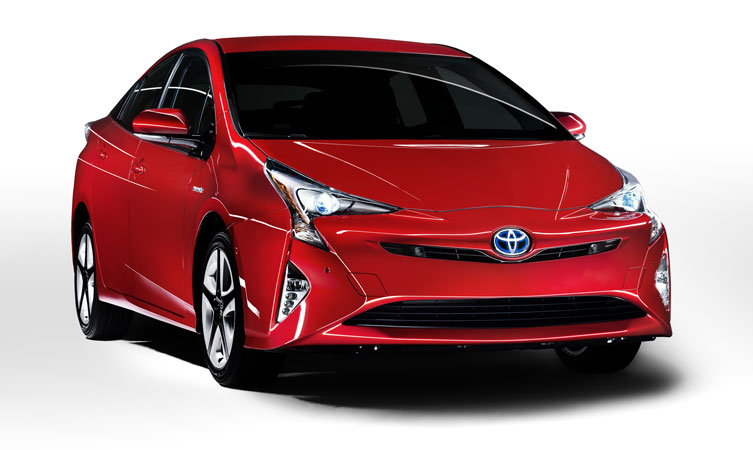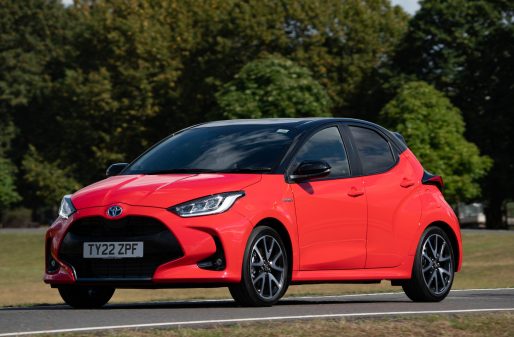Successive versions of the Toyota Prius have made significant advances in emissions performance and fuel economy, but none more so than the all-new fourth generation model. Carbon dioxide emissions are set to reach a new low of just 70g/km, with average fuel economy from 94.1mpg (depending on market and subject to final homologation).
These figures mark the greatest improvement yet from one model generation to the next since the introduction of the original Prius in 1997. At the same time, true to Toyota’s commitment to building ever better cars, new Prius benefits from greatly enhanced dynamic qualities in terms of handling, responsiveness and driver involvement.
Advances in efficiency
Using less fuel and reducing exhaust emissions have always been central to the concept of the Toyota Prius. With the all-new model Toyota has undertaken comprehensive re-engineering of its hybrid system and produced a ground-breaking aerodynamic design to take its signature efficiency to new heights.
As a result, CO2 emissions for the new model are from 70g/km, with average fuel consumption from 94.1mpg. This compares to the 89g/km and 72.4mpg achieved by its predecessor.
Changes to the hybrid powertrain are central to this achievement, including development of the 1.8-litre VVT-i Atkinson cycle petrol engine to produce a world-best 40 per cent thermal efficiency. The detailed changes to the unit have reduced friction and mechanical losses, so a greater amount of energy can be obtained from every drop of fuel.
Elsewhere in the system all the major components have been redesigned or revised to save weight and improve efficiency, including the transaxle, electric motor and power control unit.
Prius uses a new nickel-metal hydride (NiMH) battery that is more compact, yet more energy-dense, giving better performance and easier packaging – it is now located entirely beneath the rear seat, avoiding any compromise in trunk space.
The new Prius’s aerodynamics also makes an important contribution. The car’s lower, sleeker styling is sharper and more eye-catching, but at the same time more aerodynamically efficient. Toyota has succeeded in further improving the coefficient of drag (Cd) from 0.25 on the current model to 0.24. Both the bodywork and the under-floor area benefit from detailed elements that help smooth the flow of air over, under and away from the vehicle, reducing fuel consumption.
Better real-world performance
The new Prius accelerates from nought to 62mph in 10.6 seconds. Highway overtaking acceleration from 50 to 75mph (80 to 120km/h) can be accomplished in just 8.3 seconds and the top speed is 112mph. The new hybrid system’s output is 120bhp (90kW), and the drivetrain now delivers its power in a more user-friendly manner. The new PCU (Power Control Unit) allows the system to draw more on its electric power, which means that acceleration feels more natural with the engine revs building up gradually as the car gathers speed.
Day to day usability also improves significantly. This fourth generation Prius is the first that is able to pull a trailer, thanks to its 725 kg towing capacity (unbraked).
Improved vehicle dynamics
The focus on better efficiency has been matched by Toyota’s commitment to achieving better dynamic performance, making new Prius a more rewarding car to drive. Central to this mission is its use of the first TNGA (Toyota New Global Architecture) -based platform, called the GA-C platform, which has allowed for a much (2.5 cm) lower vehicle centre of gravity – a fundamental element in securing better handling.
The benefit of this is supported by a much more rigid bodyshell – a 60 per cent improvement on the current model. This has been achieved using new welding and construction techniques and strategic use of strong but lightweight, high-tensile strength steel.
A new double wishbone rear suspension contributes to better handling and stability, together with increased comfort for passengers. It is tuned to harness the improved performance by reducing body roll and maintaining straight-line stability, so the car is equally adept at handling winding roads or highway cruising.
These qualities combine with improved feedback and responsiveness from the throttle, steering and brakes to significantly raise Prius’ dynamic performance and create a more fun-to-drive character.
2016 Toyota Prius mpg and other technical data
| ENGINE | |
| Type | 4-cylinder in-line, DOHC |
| Displacement (cc) | 1,797 |
| Max. output (bhp/kW @ rpm) | 97/72kW @ 5,200 |
| Max. torque (Nm @ rpm) | 142 @ 3,600 |
| ELECTRIC MOTOR | |
| Max. output (bhp/kW) | 72 /53 |
| Hybrid battery material | Nickel-metal hydride (NiMH) |
| HYBRID SYSTEM | |
| Combined system max. output (bhp/kW) | 120/90 |
| PERFORMANCE | |
| Acceleration 0 – 62mph | 10.6 sec |
| Acceleration c50 – 75mph (80 – 120 km/h) | 8.3 sec |
| Max. speed (mph) | 112 |
| FUEL CONSUMPTION & EMISSIONS (subject to final homologation) | |
| Fuel consumption – combined cycle (mpg) | From 94.1 |
| CO2 emissions – combined cycle (g/km) | From 70 |
| DIMENSIONS | |
| Length (mm) | 4,540 |
| Width (mm) | 1,760 |
| Height (mm) | 1,470 |
| Wheelbase (mm) | 2,700 |
| Interior length (mm) | 2,110 |
| Interior width (mm) | 1,490 |
| Interior height (mm) | 1,195 |
| Towing capacity – unbraked (kg) | 725 |





Congratulations!
I can’t imagine the next generation 🙂
Is the 4 wheel drive available as an optional extra in UK, or is it a standard feature on some models?
Hi Robert,
Thank you for your post. The 4 wheel drive 2016 Prius will not be available in the UK market. Hope this helps clarify and if you have any other questions please let us know.
That’s a major disappointment – after well over ¼ million miles and 13 years in all three previous versions of the Prius, I was starting to think about the Gen 4, but I will only buy 4WD in future. Looks like my 2012 will be my last Prius, will probably keep it until the Tesla model 3 is launched.
When will the Plug-in version be available
Hi David,
Thank you for your post. We have no other information at present however the current generation of Prius Plug-In is still being produced. However keep an eye on our blog for all the latest news. Hope this helps and if you have any other questions please let us know.
0-60 is worse than Gen3. No e4wd for UK but price up by 5k you are having a laugh.
Hi Jay,
Thank you for your post. You are indeed correct, Gen3 Prius does 0-62mph in 10.4 seconds and 2016 Prius does 0-62mph in 10.6 seconds. However 2016 Prius offers many more features than the 2009 Prius. The 2016 Prius Active offers:
15-inch alloy wheels
Dual-zone automatic air conditioning
Smart Entry (driver’s door) and push-button start
LED headlights
Toyota Touch 2
DAB radio
Electrically adjustable driver’s seat
Driver’s seat lumbar adjust
Dual 4.2-inch colour TFT multi-information displays
Forward Collision Warning with Autonomous Emergency Braking
Adaptive Cruise Control
Road Sign Assist
Lane Departure Alert
Automatic High Beam
All these features come as standard. Hope this helps clarify and if you have any other questions please let us know. Many thanks.
Took delivery of an Auris Design hybrid in September. Love the car, other than the fuel consumption, which is far below those quoted. The vehicle has so far not exceeded 52mpg.
Hi Leslie,
Thank you for your post. We are glad to hear you are happy with your Auris. In regards to your fuel consumption have you visited your local Toyota Dealer to let them have a look at this for you? Many thanks.
Will there be a Plus of Prius IV?
Hi there,
Thank you for your post. We have no news at present but we would advise you to stay tuned to Toyota Germany’s latest news. Many thanks.
Hi Pete,
Thank you for your reply. We are very sorry to hear this. We have passed your comments on to our product team. Many thanks.